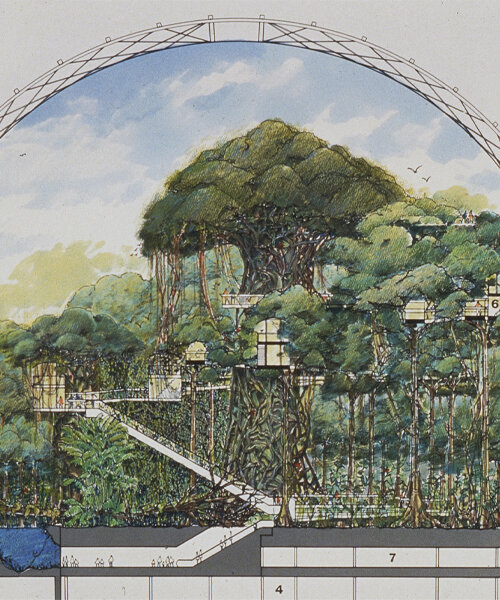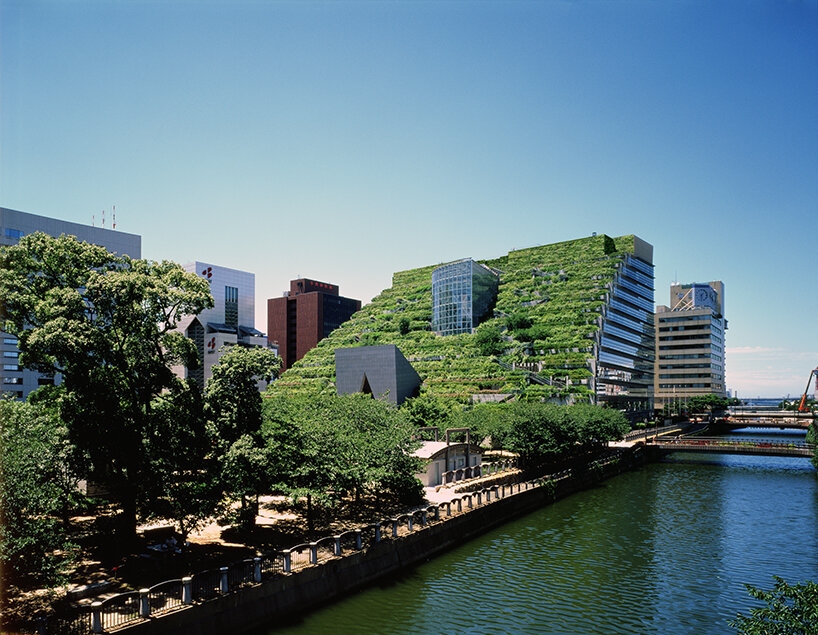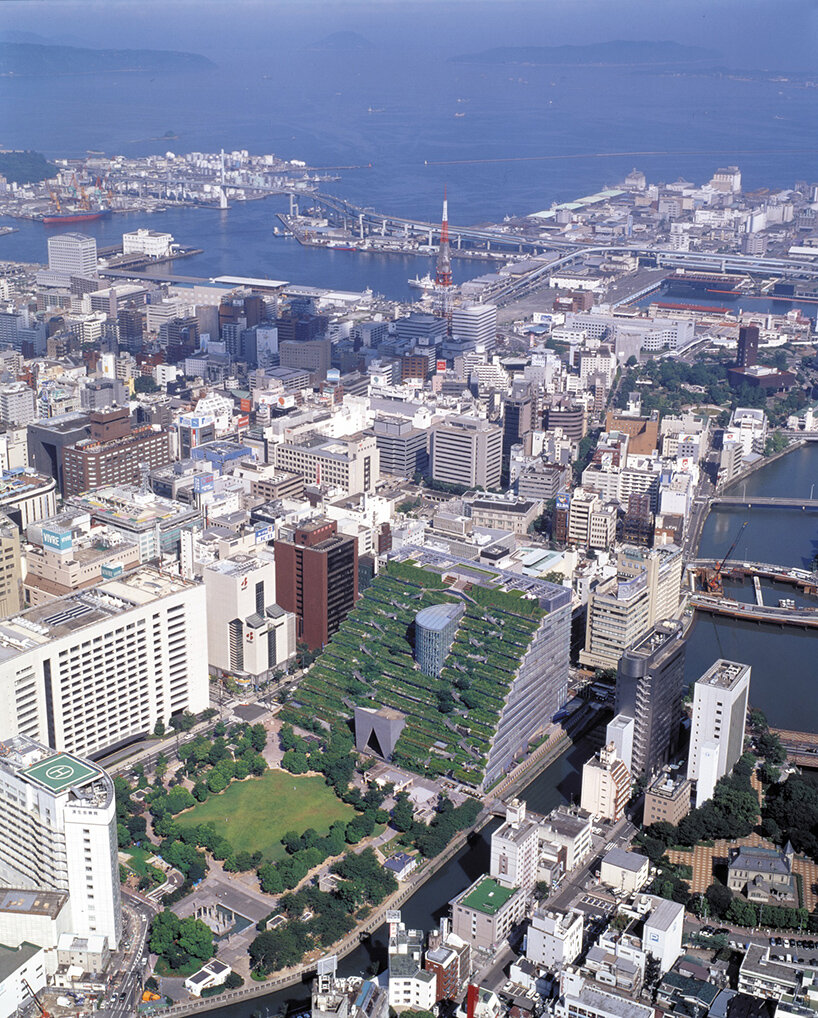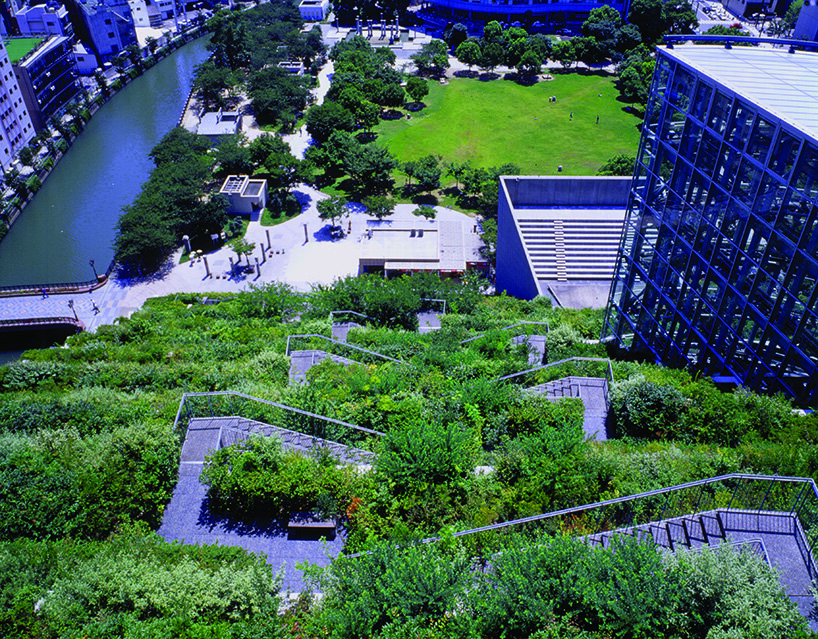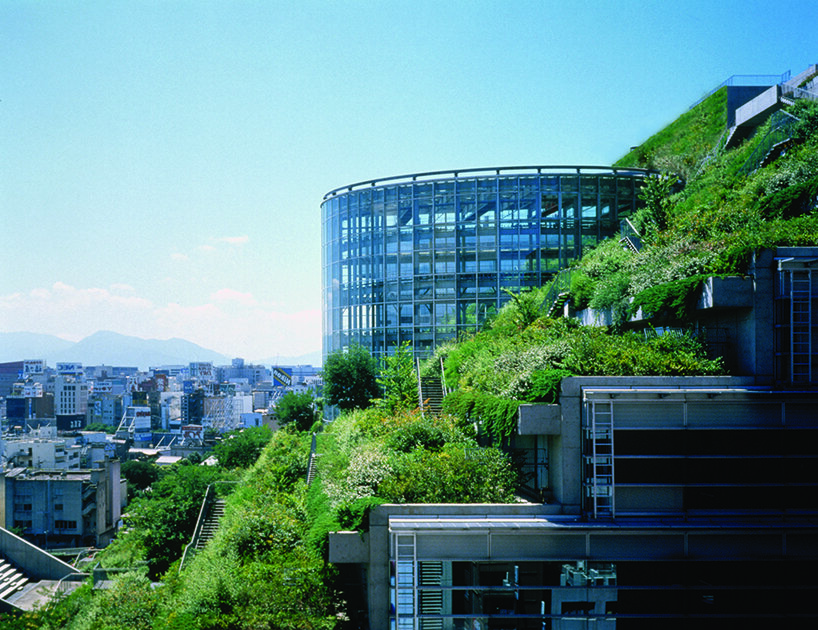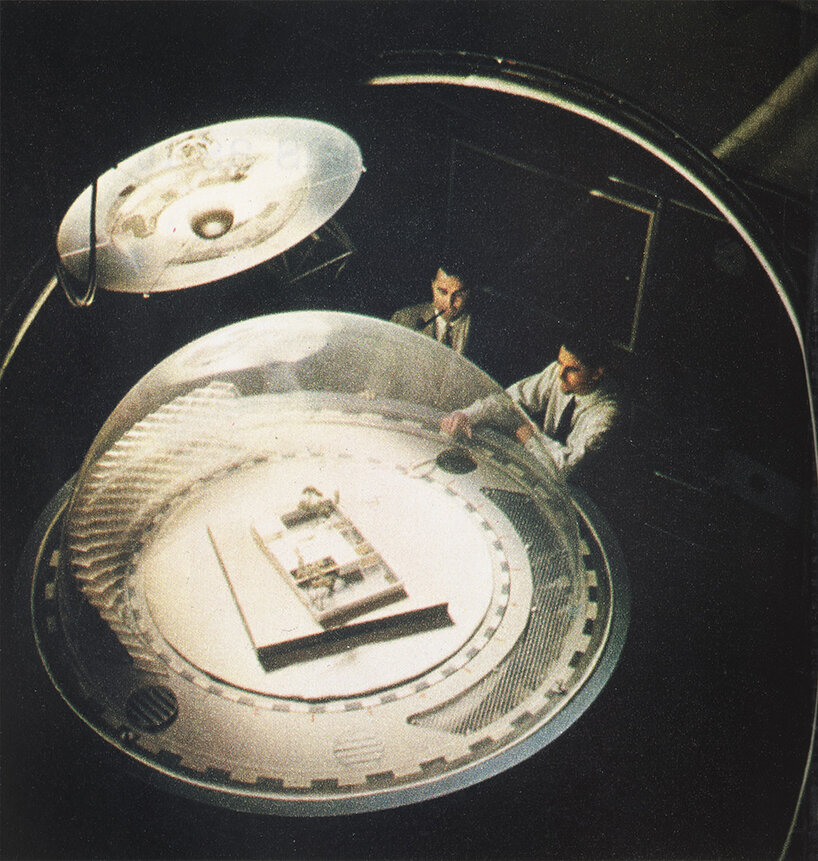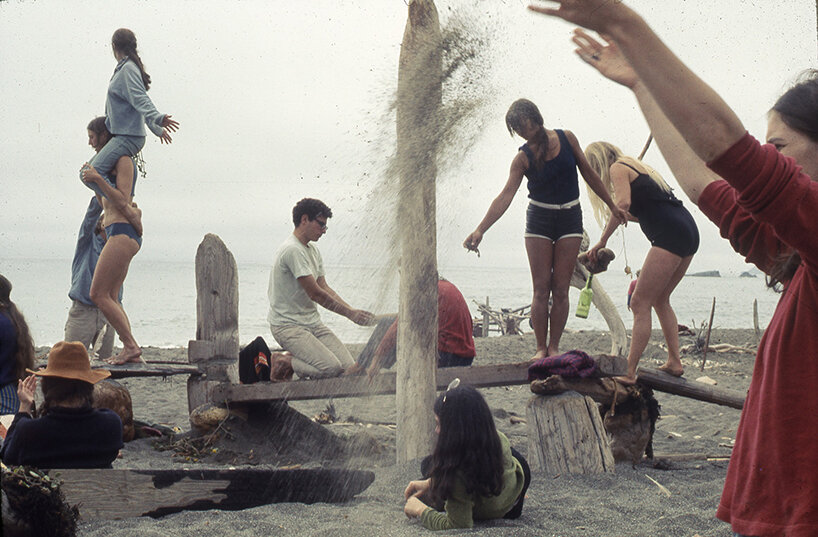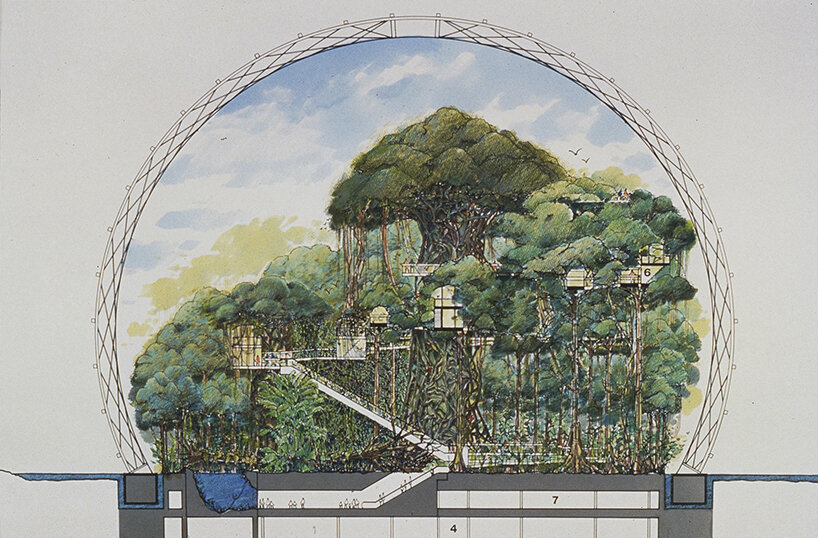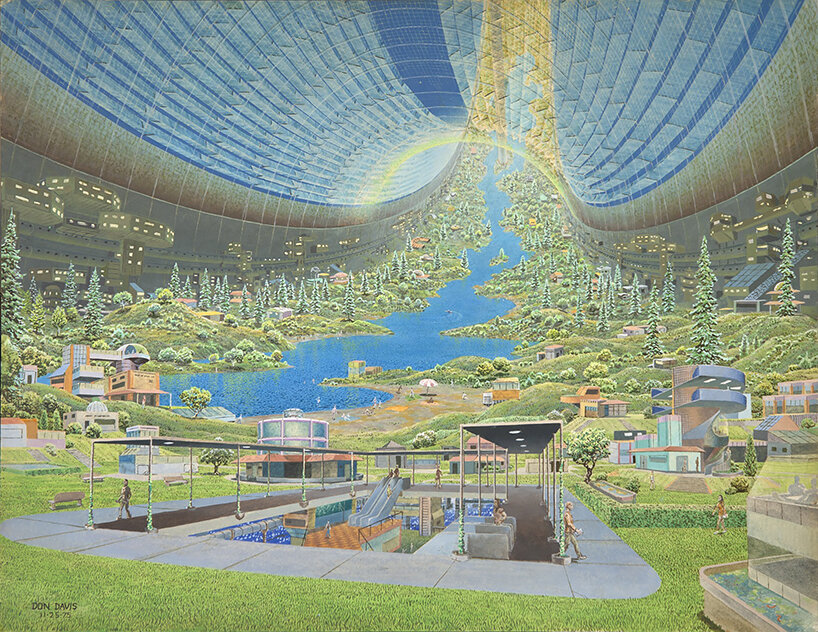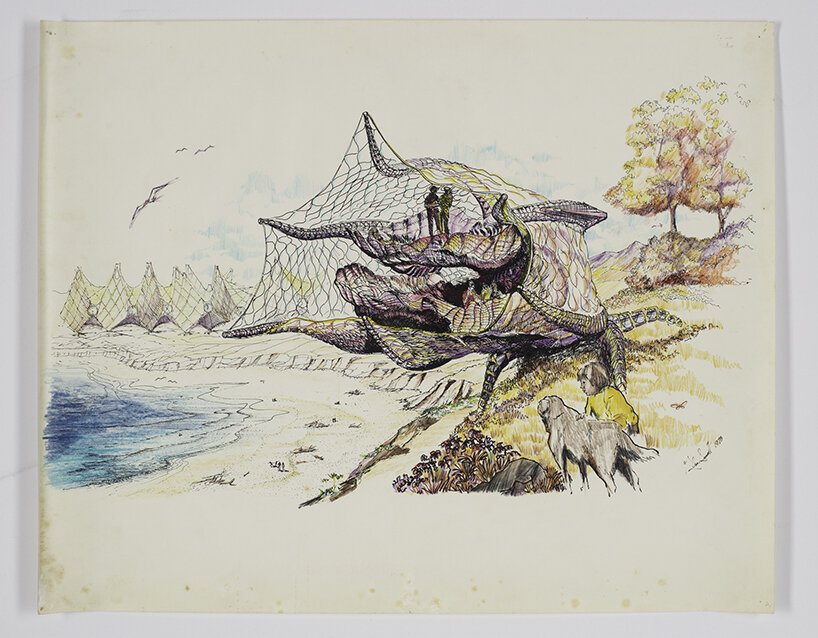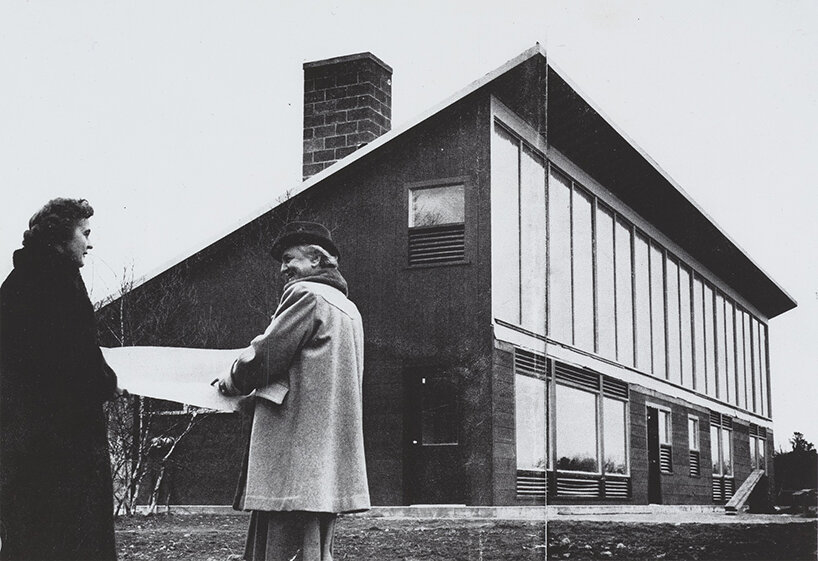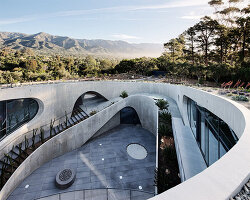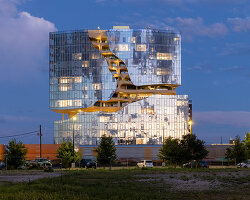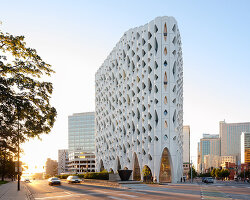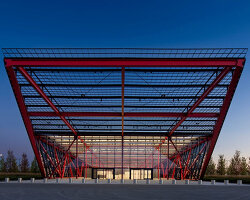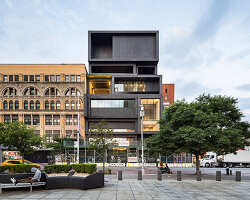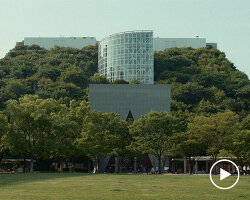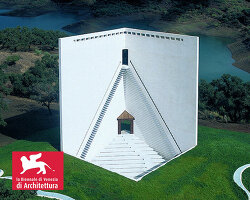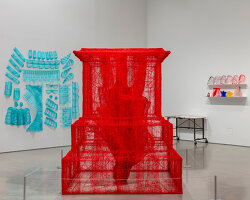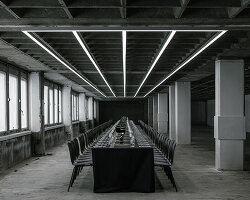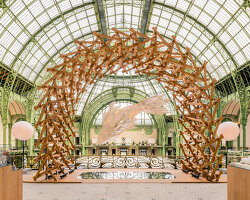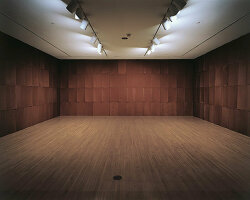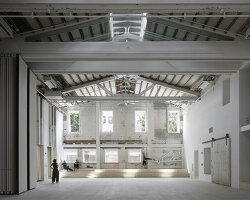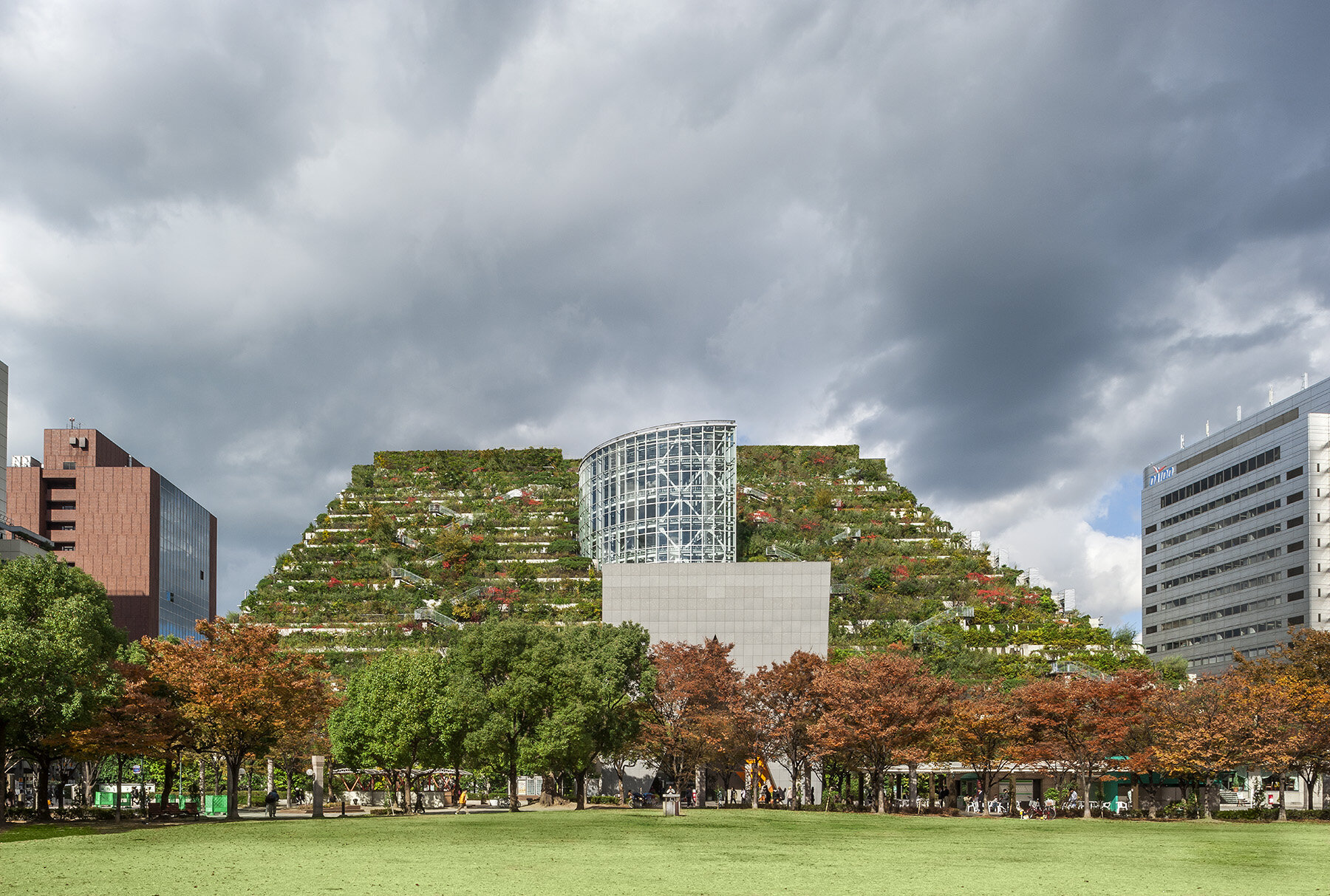
celebrating ACROS Center’s 25th anniversary | image courtesy Emilio Ambasz & Associates
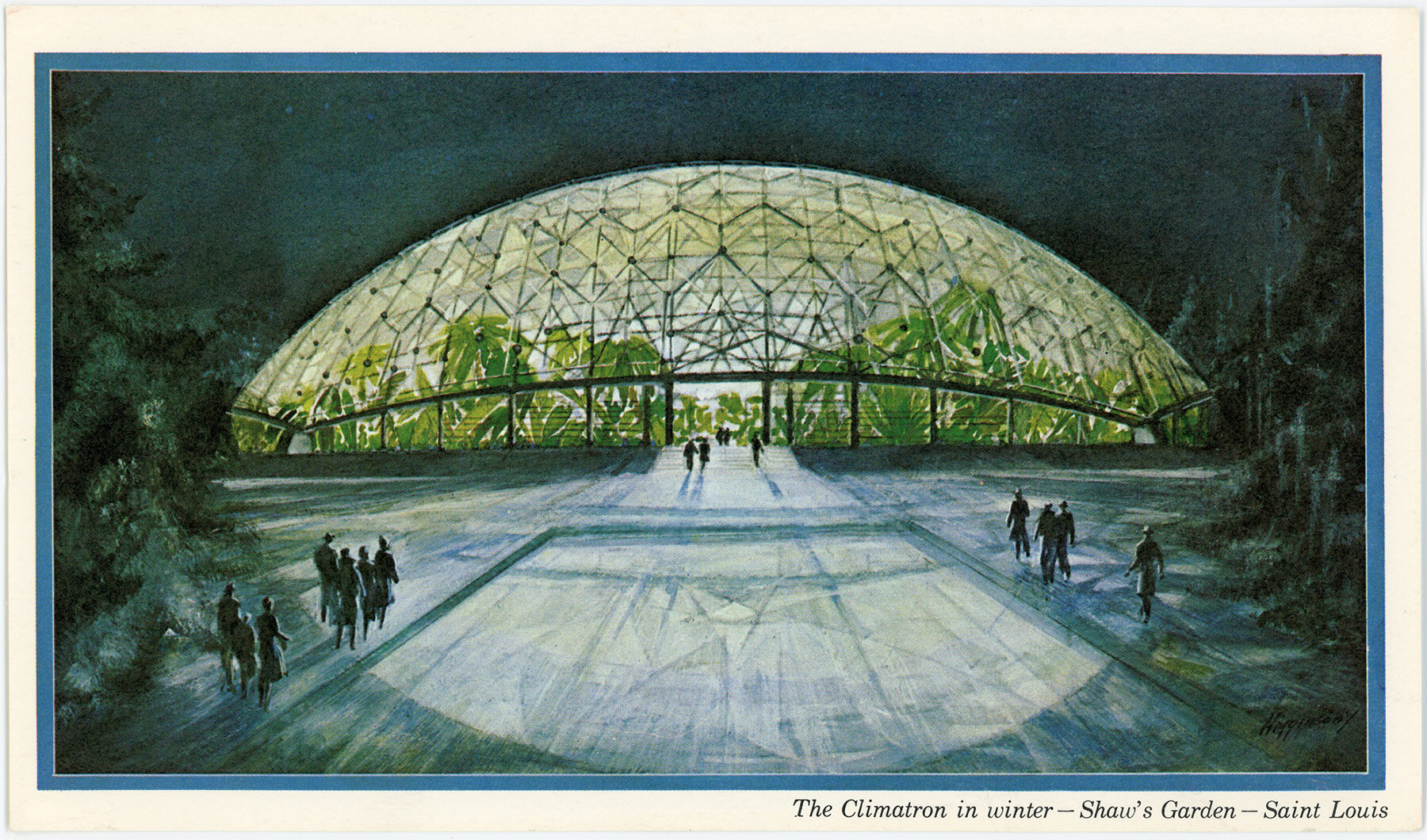
unknown artist, The Climatron in winter–Shaw’s Garden–Saint Louis (c. 1960) | postcard, 10.2 × 20.3 cm | © The Missouri Botanical Garden Archives
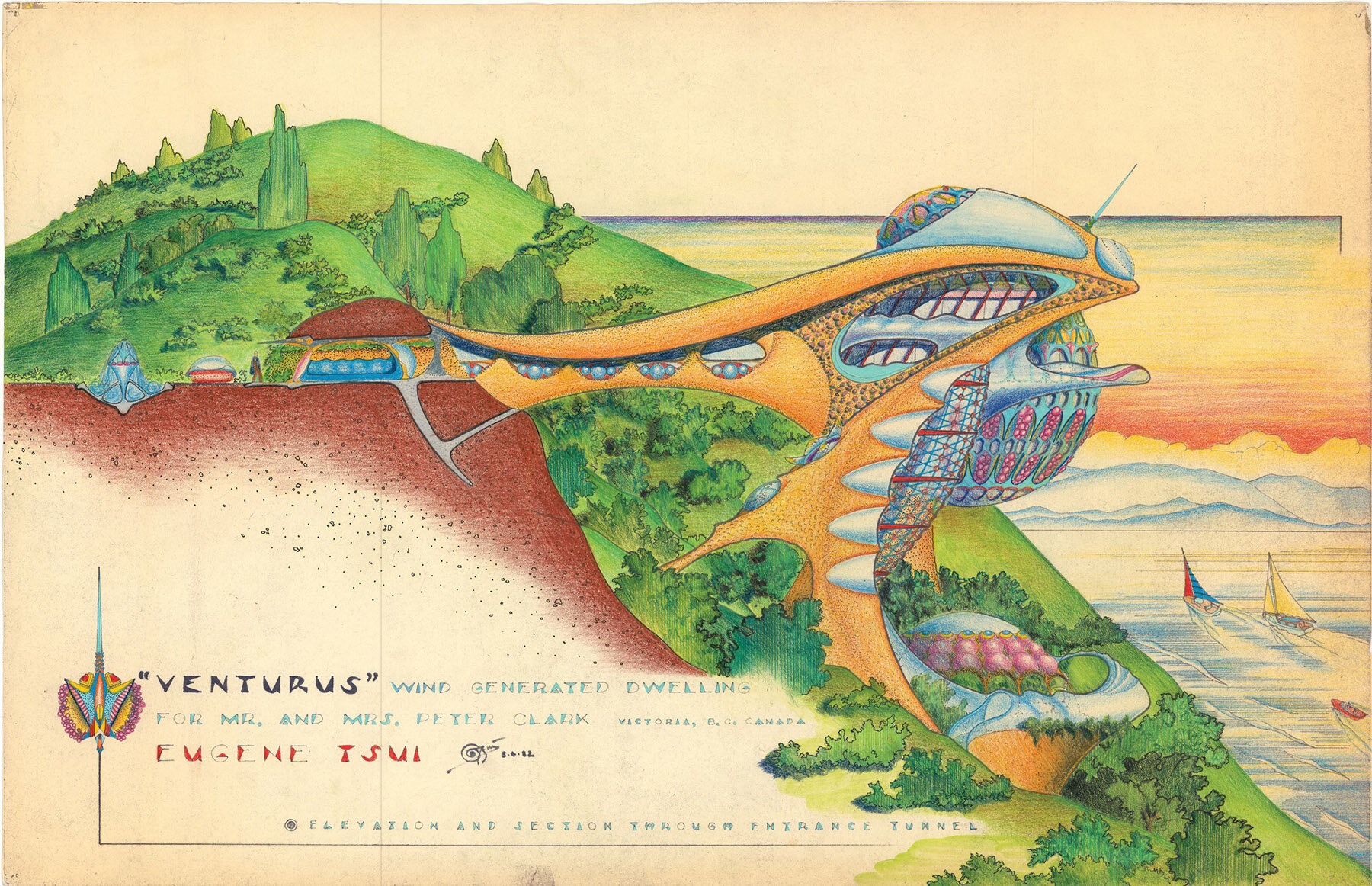
Eugene Tssui (1954) Venturus | wind-generated dwelling for Mr. and Mrs. Peter Cook, Victoria, BC, Canada (1982) | elevation and section through entrance tunnel | watercolor, prismacolor pencil, pastel chalk, and colored ink on paper, 53.3 × 81.3 cm | © Collection Eugene Tssui
KEEP UP WITH OUR DAILY AND WEEKLY NEWSLETTERS
PRODUCT LIBRARY
with its mountain-like rooftop clad in a ceramic skin, UCCA Clay is a sculptural landmark for the city.
charlotte skene catling tells designboom about her visions for reinventing the aaltos' first industrial structure into a building designed for people.
'refuge de barroude' will rise organically with its sweeping green roof and will bring modern amenities for pyrenees hikers.
spanning two floors and a loft, the stitled design gave room for a horizontal expanse at ground level, incorporating a green area while preserving the natural slope.
